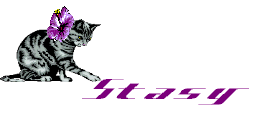


Probably best known as the co-author of Pink Floyd's "Atom Heart Mother" in 1970, composer, performer, sound architect, writer, lecturer, broadcaster and interactive designer Ron Geesin also collaborated with Roger Waters on the innovative "Music from the Body" in 1970, a recording that employed organic sounds as instruments. After his first solo album, "A Raise of Eyebrows", in 1967, Geesin went on to become one of the first one-man record companies with the self-released "As He Stands", "Patruns", and "Right Through". His music has always pushed the envelope with eclectic sensibilities and quirky compositions, relentlessly searching for novel applications of sound.
In the Nineties, Geesin self-released a pair of CDs, "Funny Frown" and "Blue Fuse", melding modern technology with his predilection for appropriating and mangling found sounds. In 1994, Cherry Red Records released the "Hystery" CD, an overview of his sonic career. In 1995, Cleopatra Records released his "Land of Mist" CD, wherein he explored a somber collection of instrumental ambience. In 1995, See for Miles Records re-issued his first two vinyl albums on CD.
A pleasant sense of mirth permeates his work.
Interested parties are encouraged to visit Geesin's website for more details of his weirdness, including glimpses at his installations and poetry.

RON GEESIN: Right Through and Beyond (CD on Headscope Records)
The bulk of this release from 2003 comprises a classic Geesin album from 1977; previously unreleased material from 2003 has been added to achieve a total of 60 minutes of quirky music which quite deftly defies classification.
This music exudes strangeness, in subject, in content, even in execution. Besides conventional instruments, Geesin makes ample use of several self-devised motion-notions (Door-o-plane, Rhythidoor, and Rhythiano) to realize the songs on this release. Geesin starts with the simple sound of a door (closing, creaking, bumping) and then subjects those sounds to extreme looping and treatments, thereby transforming the household object into a versatile and eclectic musical instrument. The description truly does not do it justice. One application produces obvious percussion rhythms, while another resulting in a whirling dervish of blurred motion. The variations are limitless, and Geesin explores them with a creative and rewarding gusto.
Keyboards and guitars and banjo play important roles in this recording. His nimble fingers pluck and strum with inventive agility, describing elaborate tapestries of crystalline chords. Keyboards erupt with lavish resonance, sweeping panoramas of melody that cavort and pirouette with jubilant enthusiasm, swelling and rising and gaining girth with each passing minute, reaching a crescendo that is tinged with eerie wailing undertones.
Geesin's voice also plays a vital role in the music, as does his predilection for splicing words together to form novel new concepts. His lyrics spill like a stream of conscious babble, forming surprising connections and articulating unconventional phrases that are delightfully expressive. Alternating between throaty declarations and munchkin-like chants, his vocals function as a versatile instrument. An assortment of non-verbal mouthings are often utilized to convey exasperation and exaltation.
Shorn of all these intriguing analyses, the melodies here are enthralling and compelling, humorous and festive. One minute the tunes evoke ragtime, the next the music is expanding to momentous proportions that seethe with grandeur and elegance. Strangeness, though, is a constant and entertaining fixture.
The five previously unreleased tracks are brief and consist mostly of Geesin on banjo and vocals, performing folksy ditties that warp into idiosyncratic frivolity. The last track utilizes dense organs and clever effects to achieve a grand mesmerism. The pieces are playfully emphatic.

| Entire page © 2004 Matt Howarth. All rights reserved. |
Webpage design by
 |